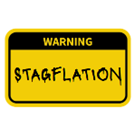TEAM Talks
The financial world is always shifting, with new developments influencing markets and economies. Here’s our take on some of this week’s noteworthy financial news.
 European car makers were the latest casualties of Trump’s highly anticipated ‘Liberation Day’, as he threatened to impose 25% tariffs on cars and car parts imported into the US. Nearly half of all cars sold in the US last year were imports, so the move would hit an already pessimistic US consumer—not only those buying new cars, but also second-hand buyers and even car insurance customers.
European car makers were the latest casualties of Trump’s highly anticipated ‘Liberation Day’, as he threatened to impose 25% tariffs on cars and car parts imported into the US. Nearly half of all cars sold in the US last year were imports, so the move would hit an already pessimistic US consumer—not only those buying new cars, but also second-hand buyers and even car insurance customers.
 Two opposing narratives are shaping the future of European shares: on one hand, a boom in defence spending and German infrastructure; on the other, the drag from US tariffs on global trade. This dichotomy began to play out in March, with value companies—more tied to the domestic economy—outperforming growth companies reliant on exports. Overall, portfolios benefited from healthy exposure to the region.
Two opposing narratives are shaping the future of European shares: on one hand, a boom in defence spending and German infrastructure; on the other, the drag from US tariffs on global trade. This dichotomy began to play out in March, with value companies—more tied to the domestic economy—outperforming growth companies reliant on exports. Overall, portfolios benefited from healthy exposure to the region.
 The gap between soft data—indicators of sentiment—and hard data—actual economic performance—is widening again. This has been an ongoing theme in recent years, and investors may be tempted to dismiss pessimism. However, the boy who cried wolf may be right this time, as companies and consumers front-run US tariffs. A jump in inventories suggests strong current demand may come at the expense of future weakness.
The gap between soft data—indicators of sentiment—and hard data—actual economic performance—is widening again. This has been an ongoing theme in recent years, and investors may be tempted to dismiss pessimism. However, the boy who cried wolf may be right this time, as companies and consumers front-run US tariffs. A jump in inventories suggests strong current demand may come at the expense of future weakness.
 Stagflation is a dreaded word, especially among investment professionals. The latest hotter-than-expected US inflation data suggests this is a real possibility, as personal spending was also softer than expected. If data doesn’t improve in March, expect downward revisions for Q1 GDP growth in the US. We know consumer confidence has seen a steep plunge, and companies’ guidance in the upcoming earnings season will be heavily scrutinised by investors.
Stagflation is a dreaded word, especially among investment professionals. The latest hotter-than-expected US inflation data suggests this is a real possibility, as personal spending was also softer than expected. If data doesn’t improve in March, expect downward revisions for Q1 GDP growth in the US. We know consumer confidence has seen a steep plunge, and companies’ guidance in the upcoming earnings season will be heavily scrutinised by investors.
 Meanwhile, gold remains the biggest winner in the current turmoil. Higher inflation expectations, weaker growth and geopolitical uncertainty are all good for gold, which recently hit fresh highs. Strong demand among the world’s central banks—who can no longer trust US Treasuries as a store of value—continues to play a key role in our diversification strategy.
Meanwhile, gold remains the biggest winner in the current turmoil. Higher inflation expectations, weaker growth and geopolitical uncertainty are all good for gold, which recently hit fresh highs. Strong demand among the world’s central banks—who can no longer trust US Treasuries as a store of value—continues to play a key role in our diversification strategy.
